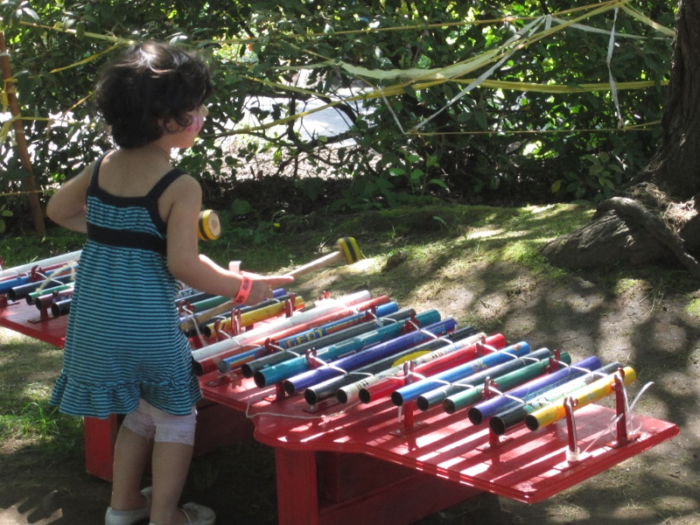(This article was written for the Bazaarvoice User Experience newsletter, b:focused. Cover Photo by Kelly Sikkema.)
One of the biggest hurdles to overcome when beginning to design and develop inclusive products and services is the fear that including everyone is an impossible task. There are so many things people to consider that it can feel insurmountable.
Changing how we think about the problem
When we consider the scale of including everyone, we need to change our mindset. Instead of the daunting "I need to cover every possible condition and set of needs," we can instead focus on the smaller steps to take. Instead of focusing on how high the mountain is we're climbing, we instead focus on the steps in front of us, occasionally checking the map. The problem changes from "solve for everyone" to "recognize when we're excluding someone."
In her seminal work, Mismatch: How Inclusion Shapes Design, Kat Holmes suggests that we learn how to start designing inclusively by considering playgrounds:
"Think back to the objects and people that occupied your play space. Try to remember what worked well for you. It's likely there were moments when you were happy to play alone […and others] when you played together with many children. Can you describe what it was that made those spaces inclusive? It's also likely […you] felt left out, either because there was an object you couldn't use, or because you were ostracized by people around you. What was it that made these spaces exclusionary?"
Kat Holmes, "Mismatch: How Inclusion Shapes Design"
Kat went so far as to work with children's playground designers to see how they approach inclusion, learning about inclusion through gently sloping ramps to the highest lookouts, and sound features such as the harmonious ringing gamelan, an instrument often installed where "you can't play a bad tune."

She shared a powerful quote from the playground designer Susan Goltsman:
"We interviewed kids with various levels of disability, and the more severe the disability, the more vicarious the play. So the child who could not move very much was playing full-on in their brain, using other kids out on that play area to play through. So access means a lot of different things to a lot of different people."
Susan Goltsman, from the book "Mismatch: How Inclusion Shapes Design" by Kat Holmes
This struck me, as a parent of a 5 year old and my experience with different playgrounds. When I was a child, playgrounds were still made of steel and wood, monkeybars and platforms. As a kid with balance issues, I never felt comfortable climbing to the top of a steel geodesic dome at my playground—it got too hot in the summer, and I couldn't maintain a good grip and steady myself. I'd watched a friend, more dextrous than I, lose his grip and fall 15 feet, breaking his arm. They don't build 'em like that any more, because of exclusion (and simple liability).
Learning from the unintentional exclusion of others

Taking my daughter to the Play for All Park in Round Rock was a radical departure from my childhood expectations. The park is a case of true inclusion, but even as a pinnacle of accessibility, they are still learning, and in recent years they redesigned and expanded the park, providing more play opportunities for children (and adults) of all abilities.
Swing sets are crucial for playgrounds. As an infant, my daughter watched kids swing with rapt attention; she grew and then started swinging as soon as she could sit up—thanks to the now ubiquitous full bucket swing.

Now that she's bigger, she can swing in the normal style swing seats. The full bucket swing is a case of designing to fix a mismatch, to fix a certain type of exclusion. At the Play for All Park, however, they have an even broader selection of swing seats, including group swings and larger plastic locking swings for small children and larger kids that need help staying in the seat. But the coup-de-grace is their wheelchair swing, dedicated to a segment of kids (and adults) who may have longed to swing, but had always been excluded.

These change in playgrounds didn't happen overnight. No one sat down and magically considered every play scenario and every moment of exclusion. They learned, and they listened, and they took the steps to improve, to include, and to make it fun for everyone.
We're lucky that this process of gradual, iterative improvement is worlds easier with software than it is with the literal hardware of playgrounds. But like playgrounds, we don't have to relearn from the same mistakes of exclusion every time we build something. We can reference the core wisdom and guidelines of our predecessors, and then take our steps up the mountain by continuing to listen and learn from the needs of the people we will unintentionally exclude.
